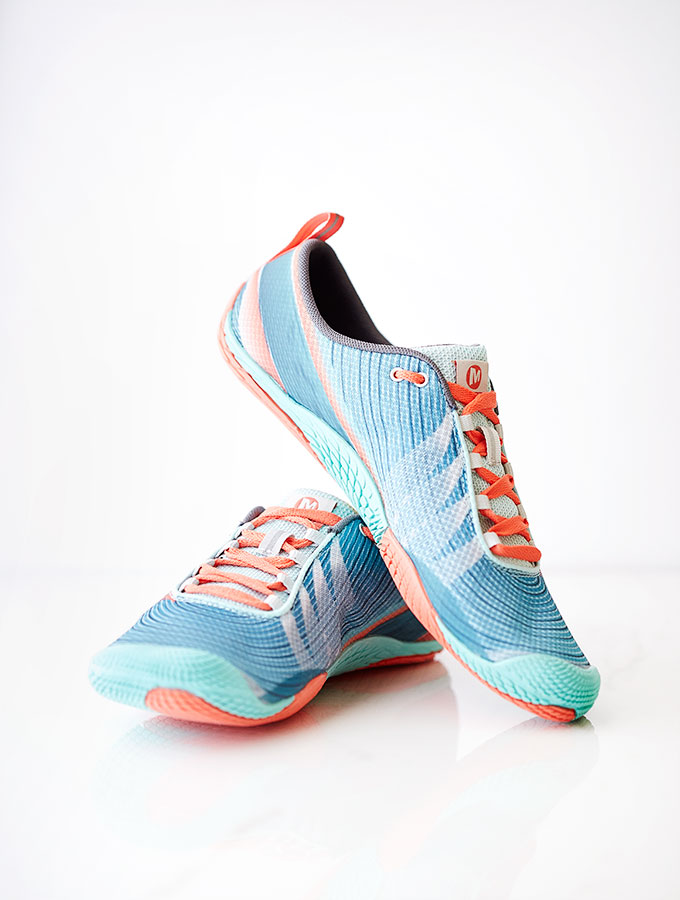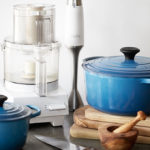
Minimalist is Healthiest
If you’re looking for an near-barefoot running shoe, the Merrell Vapor Glove 2 is surprisingly one of few shoes to choose from in today’s market. Thankfully it performs well and at $85, is very reasonable priced.
This minimalist shoe is not quite barefoot, but it’s pretty close to it with zero-drop ground contact. The lightweight sole will give your foot the freedom to flex, your toes to spread apart and take an active role with every step. The sole allows for full stimulation as you feel every bit of texture that comes in contact with your feet.
My introduction to this type of shoe was the New Balance Minimus barefoot style with Vibram sole. After getting used to the barefoot experience, I simply fell in love with that shoe. Unfortunately New Balance did away with the style after a few years and replaced it with a clunky trail runner. The Vapor Glove is a close fit, although sadly not a cute as my old Minimus shoes.
No sense in crying over spilt milk. I’ve learned to embrace the Glove with its techy look (the all black may be a bit sexier), and am just grateful that I was able to find another shoe equal in performance without having to switch to the full-throttle barefoot shoe experience. I just can’t get with fingered feet, running sandals or actual bare feet.

If you’re not running almost barefoot, here’s why you should
Going almost barefoot was a game changing, or rather posture changing, shift in my practice. This type of shoe lay the foundation for my body to tilt forward, for my feet to lift behind me rather than strike in front of me, for my knees and shins to stop hurting, and even made it possible for me to continue running after recuperating from a herniated disk! It was pretty remarkable to me that where I could no longer do yoga safely – I could run. And this was recommended to me by a neurosurgeon with a yoga background.
It is this correct posture reinforced by barefoot/ almost barefoot running that will allow for a lifelong practice. In 2010 Dr. Daniel Lieberman of Harvard University published a study that clearly showed that runners in conventional shoes land on their heels, sending a damaging jolt of force through the skeleton; from ankles, through every joint, right up through the spine. Not good!
Conversely, barefoot runners tend to land on the fore or mid foot, with a landing point closer to the body’s center of mass. This correct posture also allows the runner to utilize the inherent shock-absorbing mechanisms of the muscles, ligaments and tendons found throughout the foot, ankle, knee and hip.
In my opinion this type of shoe works best on a trail or track, but with proper posture the idea is that you can also run on pavement without injury. The key to running in almost barefoot shoes is that you can’t ever allow yourself to strike with your heel. The upside is that unlike the enormous, stiff-footed, clunky running shoes of the past, in this shoe you can actually feel what your foot is doing and have much greater control.
One caveat you must know before making the leap
This is why New Balance discontinued true barefoot style shoes. Too many returns. The shoes should really come with an info pamphlet for first timers! Here’s what you need to know:
If you’re switching from running shoes with a thick sole, after your first run in this type of shoe your calves will kill. I mean, you’ll have a hard time walking, especially up and down stairs! This is actually kind of awesome, because it gives you a very clear picture of how few muscles you used before the switch.
I went through this myself, and have witnessed several people hobble around after their first run or two, despite being experienced life-long runners. The first month will be tough, but it’s a breeze from there! Just don’t give up on it. You’ll feel an unrivaled freedom once you’re broken in. Seriously, if you run in thick soled sneakers, it’s like going from clobbering around like a hippo to running like a gazelle.




